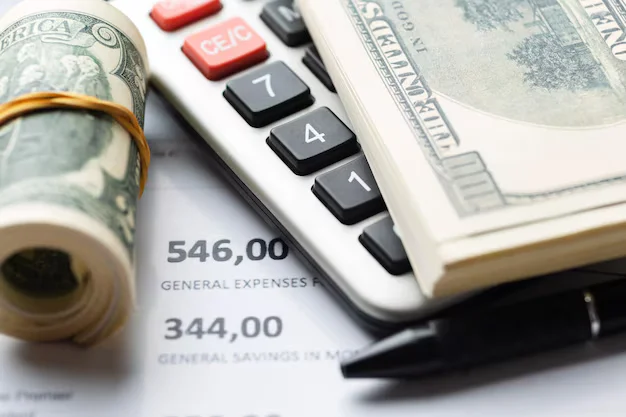

Whether you're an employee or an employer, you must know the basics of pay stubs. By understanding the different things that are on a paystub, you can catch accounting errors, and if you are an employer, help your employees decipher their paychecks.
Did you realize that 78% of employees live paycheck to paycheck? This is why, as an employer, it is critical to have accurate pay stubs. Understanding "what are pay stubs?" is perhaps the most efficient method of ensuring that workers are appropriately compensated for their work.
Knowing what the basics pay stubs are equivalent to knowing what a check stub and paycheck stub are. All of these words have the same meaning. A pay stub is found on a paycheck from an employer and specifies the payment. However, not all states need pay stubs, and in certain circumstances when they are required, the information that should be included may be vague.
As a result, we've compiled a list of suggested items that might assist you in maintaining a credible audit trail and reducing employee enquiries.

A pay stub example is the itemized record of earnings for a pay period, which includes detailed pay statements showing deductions and taxes. The paystub, also called a pay slip, shows the wages earned during a current pay period and year-to-date, reflecting employee's earnings accurately.
This will include your hourly rate, overtime pay, your pay stubs deductions, time tracking, tax withholdings, and taxes deducted. The total amount of earnings will be listed as an employee's gross income and net income.
Gross wages are what you earn before any tax deductions and pre tax deductions are taken. The pay stub then details the taxes and deductions that are taken out of the gross earnings. After all taxes and deductions, the amount the person receives, known as net pay, is listed.
A pay statement can be either electronic or printed, and some employers might provide pay stubs or provide a pay stub regularly upon request, often through direct deposit. Employment laws, for some states, require an employer to provide an employee's pay stub. Some companies only offer electronic paycheck stubs, unless otherwise requested in writing, ensuring they comply with the Fair Labor Standards Act.
Each state often influenced by federal law, has its own requirements on what should be on a paystub, including state income taxes and possibly even local levies under state taxes. Some states have a state income tax in addition to the federal income tax.
Pay stubs important documents like paystubs are typically required by banks if you are trying to get a loan, car dealerships, and some rental agencies will require proof of income for financial transactions for tax purposes. They are also important for keeping records of your earned wages and making sure you are being paid appropriately.

Knowing what information is on a pay stub can help you understand how to interpret it.
The functions of a pay stub varies depending on whether an employee is paid hourly or as a full-time employee on a salary, managed by the payroll department. Where gross earnings are mentioned, for example, the hourly rate will be included with the hours worked. The standard pay rates for hours worked for a paid employee is 40 per week.
If an employee is eligible, pay stub information will also contain overtime. This section of the pay stub will also include the hours spent in overtime. Bonuses are also listed under gross earnings on a pay stub.
Additional information may be necessary depending on the state in which you work. This may include things like sick leave.
You should save your payroll provider issued wage statements for the tax year in addition to glancing at them on payday. The apparent explanation is that it might be useful if you have a disagreement with your employer or a tax collector.
Pay stubs, moreover, are proof of income. This may be required if you apply for a mortgage, auto loan, or even certain employment, especially if child support or other family obligations are considered.
Proof of income is especially necessary for freelancing and part-time employees. To stay on top of record keeping, many of these non-traditional professionals utilize a pay stub creator. These online solutions are especially beneficial to firms that have difficulty arranging their payroll procedures.

The different items on a paystub can be broken up into three categories:
Let's take a closer look at each of these categories.
As mentioned earlier, gross wages are the total amount earned before any taxes, deductions, or contributions are taken out. Gross wages fall into two categories: hourly or salary.
Gross pay is broken down into two separate columns, current and year to date. Within this section, your hours worked, and pay rate will be included. All overtime and double time worked will also be included.
As nice as it would be, you do not take home your gross wages. Payroll taxes and other deductions are taken from the gross pay, reducing your take-home pay. These taxes and deductions will be itemized so you can see the amounts taken from your gross pay.
Let us take a look at the most common taxes and deductions.
Other types of taxes and deductions might include retirement savings plans, health insurance premiums, Medicare taxes, FICA taxes, state and local taxes if applicable, and a number of other voluntary deductions.
Net pay is the amount left after all taxes, deductions, and contributions. This is the amount you will take home or have directly deposited into your bank account.
Below an example shows the basics of pay stubs. Keep in mind, pay stub looks will vary but usually, the same information is included such as:

If you are an employee, your employer will likely provide you with a paystub. If you are paid in cash, you can easily create one using our pay stub generator.
Whether you are a small business owner looking to create paystubs for your employees or an individual needing proof of income, you can easily and quickly create a paystub using the paystub generator offered on our website. Simply fill in all of the required information and click "View Your Stub."
Understanding the pay stub basics might be difficult if this is your first job or you've never paid attention before, especially for full-time employees in a small business.
The first thing you should do is study how it's formatted and the fundamental paycheck stub abbreviations. What, for example, is the distinction between a deduction and withholding? How does gross compensation differ from net pay?
Payroll departments make mistakes as well, so double-check your pay information for each payment, especially if you expect overtime. It's also critical to maintain track of your pay stub deductions to ensure that extra money isn't being deducted for services you didn't sign up for.
Technology is frequently used to provide a quick and easy answer to professional problems. Are you curious about how the latest technology may keep you one step ahead? Read more about the basics of pay stubs.